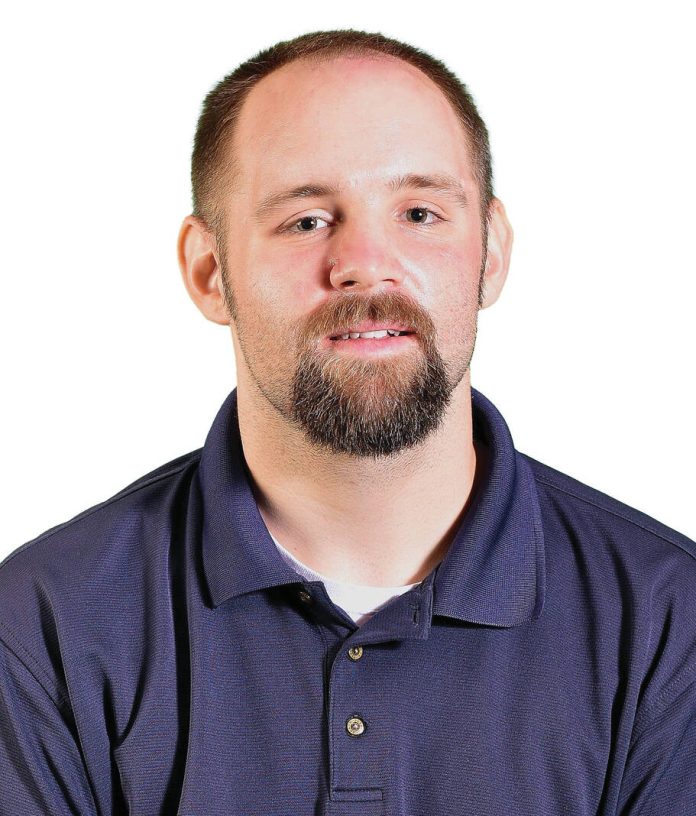
For the first two years of Three Rivers Conference play, the only games played on artificial turf where Lehman’s home games at Sidney Memorial Stadium or Piqua’s Alexander Stadium.
No more. Both Bethel and Miami East have installed turf fields.
Miami East’s new field was paid in part by to a grant from Premier Health. It was ready in time for the start of fall sports; the Vikings’ football team won its first game on the field by beating Northwestern 17-15 in Week 2. Lehman was scheduled to travel to Casstown on Friday night.
Bethel not only has a new field, but a new stadium.
I knew nothing of Bethel’s project until covering a Lehman girls soccer game there on Thursday night. It was only the second event at the new Legacy Stadium; Bethel’s boys soccer team played Miami East on Monday in the first game at the new facility.
The stadium is located behind the district’s new elementary school, located off state Route 201, and replaces the facility located behind the high school.
The turf field, track, lighting, press box and home bleachers were the first part of the project. Permanent visitors bleachers will be installed at a later stage (there are small temporary bleachers there this fall), as will concession, restroom and locker room facilities. (As of now, there are portable toilets, a trailer for concession sales, and no locker rooms.)
A highlight at Bethel’s new stadium is the LED lighting, which is superb. It’s significantly brighter than new LEDs at Xenia’s refurbished Doug Adams Stadium, which I saw a couple weeks ago when Sidney’s football squad traveled there.
Xenia installed field turf several years ago, as did Greenville. Among Miami Valley League schools, that left Troy and Fairborn as the last to have grass fields. Neither will for much longer.
Fairborn is building a new high school, which is scheduled to open for the start of the 2024 school year. A new 4,000-seat stadium is being constructed by the school, and it will sport a turf field.
Troy has raised about 75 percent of a $3.9 million target for a project that will include artificial turf at Troy Memorial Stadium. (The project will also include the renovation of Ferguson Field, which is between the high and middle schools. A soccer-specific turf field will be installed there, along with new lights, bleachers and press box.)
What I have noticed throughout my 15 years in media and being on turf fields is how they have continually improved. Bethel’s new field is the best artificial surface I’ve experienced in a high school facility, on par with or better than what Ohio Stadium had the last time I was on it about 10 years ago.
Are turf surfaces really to blame for more injuries?
Artificial surfaces have been in the news recently due to the NFL Players Association alleging natural grass fields are ‘significantly safer.’ The claims have been in the spotlight again this week after Aaron Rodgers’ Achilles injury on a new type of artificial turf at MetLife Stadium.
The NFLPA has produced research studies that have shown injuries occur slightly more frequently on artificial turf. Players say more injuries occur on the lower part of the leg, ankle and foot because it’s harder to get a grip compared to cleats on natural grass.
How much more frequently?
According to the NFLPA’s studies, in 2022, noncontact injuries occurred 0.013 more times per 100 plays on turf than natural grass. That was an increase from 2021, when injuries occurred in almost identical amounts. From 2018 to 2020, the difference remained at around 0.01 more times per 100 plays.
The NFL wrote in a statement last spring that framing the issue as merely grass vs. artificial isn’t correct.
“Some artificial turf surfaces have a lower injury rate than some grass fields — and some grass fields have a lower injury rate than some artificial surfaces,” Miller told ESPN. “Our goal is to decrease injuries on all surfaces. There are no simple answers, but we are committed to the substantial, ongoing work with the players and their expert advisors to make the game safer.”
As far as turf fields are concerned for high schools, I don’t think there’s any question the benefits outweigh the cons (if any). They certainly aren’t necessary, especially if multiple grass fields are used, like Anna does with separate football and soccer fields.
But they make life easier, especially at larger schools with multiple football and soccer teams stretching from pewee to varsity.
As for safety, there’s no question at the high school level, turf holds up far better than the average grass field. The well-manicured grass at professional venues (with full-time staff dedicated to upkeep) gets used less across an entire season than the average grass high school field gets used in two weeks.



